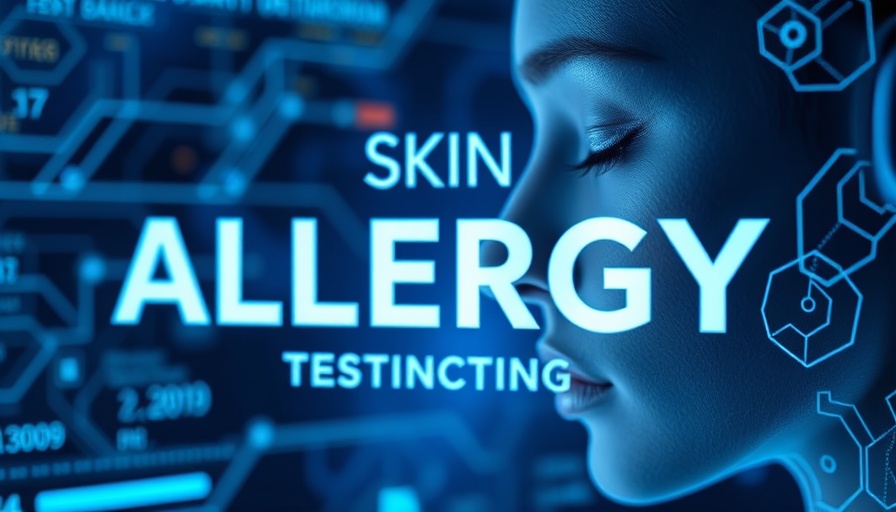
Revolutionizing Skin Allergy Testing with AI
Skin allergies, often manifesting as irritating rashes, are a common occurrence for many individuals. For those who have experienced the discomfort of an unexpected skin reaction, traditional patch testing can feel cumbersome and time-consuming. However, a recent episode of Tomorrow's Cure highlights an innovative approach that uses artificial intelligence (AI) to enhance the effectiveness and accessibility of skin allergy testing, making the process quicker and more efficient.
In 'How AI Enhances Skin Allergy Testing,' the discussion delves into the transformative role of technology in healthcare, prompting us to analyze how these advancements can reshape patient experiences.
Breaking Down the Patch Testing Process
Patch testing typically involves applying multiple allergens to the skin and observing reactions over several days. Many might find this method daunting due to its time commitment and the inconvenience of frequent visits to the dermatologist. The featured experts, Dr. Allison and Dr. Charles Bruce from Mayo Clinic, reveal that their AI-driven approach aims to streamline this testing by utilizing smartphone technology for image capturing and cloud-based analysis.
A New Perspective on Diagnosis
This new method enables patients to take photos of their skin reactions, which are then analyzed by the AI system trained on a comprehensive database of skin conditions. The AI effectively recognizes various skin types and from these images, diagnoses allergies, reducing the need for in-person evaluations. The Bruses emphasize that this system not only simplifies the process but also increases access to care, especially for those living in underserved communities.
A Broader Impact on Healthcare Accessibility
The democratization of skin patch testing has the potential to transform how we approach allergic conditions. By breaking down barriers to testing, this AI-driven solution ensures that more individuals can receive timely and accurate diagnoses, allowing for appropriate treatment plans. This vision addresses a critical need within the healthcare system, as many patients currently struggle to access specialized dermatological care.
Conclusion: The Future is Here
The integration of AI into healthcare practices is no longer just a concept for the future; it's happening now. By listening to the needs of patients and leveraging technology, dermatologists can enhance patient care significantly. The work of the Bruce team at Mayo Clinic is paving the way for a new era in allergy testing, emphasizing the importance of continuous innovation in delivering effective healthcare solutions to everyone.
 Add Row
Add Row  Add
Add 




Write A Comment